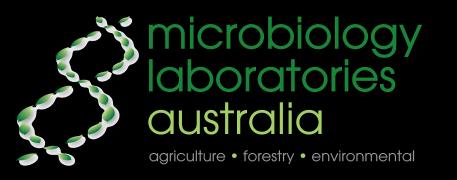Compost Indicators

Microbial Maturity




For more information about these indicators visit us at www.microbelabs.com.au


Crop Compost Authorised by Dr Maria Manjarrez Date sampled 23-08-16 Analysis no. 1239-1 98.3 100.0
Client name YLAD Agent Microbiology Laboratories Australia Sample name Compost Advisor Date: 24-08-16 Customer name YLAD Date received 24-08-16 Name: YLAD Sample: Compost Analysis no.: 1239-1 0 10 20 30 40 50 60 70 80 90 100 Microbiology Laboratories Australia • 08 7127 8982 • info@microbelabs.com.au • microbelabs.com.au Page 1 of 2
Name: YLAD
Sample: Compost

Key Microbe Groups

Analysis no.: 1239-1
Date: 24-08-16
Disease suppression
80.0
100.0 80.0
Comments Key
Total microbial biomass was very good. Biomasses of other key desirable microbial groupswere also very good, including Mycorrhizal fungi (VAM) and Protozoa. VAM fungi require a living plant host to survive, so their presence here is a plus. Protozoa often appear after composts have aged for some time, and their presence here is an indication of maturity. The Fungi to Bacteria ratio was elevated compared to the guide, but this may be advantageous if the aim was to produce a fungi-dominated compost. Microbial diversity was good. True anaerobes were elevated, which may be indicative of lack of aeration or excessive watering. These results indicate that this compost would be an excellent amendment, particularly to soils with low fungi.
Explanations
The Microbe Wise test measures the biomasses of key microbial groups directly from your sample. It uses molecular ('DNA type') technology to analyse the unique cell membrane 'fingerprint' of each microbe type to identify and quantify key groups important to compost and soil processes. This method is more accurate and precise than other methods, such as direct microscopy or plate culture, because it uses chemical extraction to remove the maximum amount of microbial material from the sample and is repeatable to 0.01% between replicate analyses. It measures organisms that are alive or recently dead (within a few days). Always compare your results with a control sample. Guide values are included as a help, but because a large number of factors affect microbiology the guide levels may not be optimal for your specific conditions. Visit www.microbelabs.com.au for more information.
Disclaimer
Analysis by Microbiology Laboratories Australia Pty Ltd ACN 145 073 481. The information in this report should be used under consideration of particular production conditions. The guide levels are derived from published data and ongoing research carried out by Microbiology Laboratories Australia. They are intended as a general guide only and do not take into account your specific conditions. Comparison of results with those obtained using other methods may be inaccurate, as accurate interpretation relies on specific sampling and analysis methods. Microbiology Laboratories Australia and its employees or agents will not be liable for any loss or damage arising from the use of the information supplied in this report. Please seek specific guidance and recommendations from a qualified agriculture professional. BDL* < 0.005 Calcium (Ca) 3.201 0.250 Methane oxidisers BDL* 0.500 Sulphur (S) 3.201 0.500 Gram negative 21.100 11.000 Potassium (K) 3.201 0.500 Protozoa 5.719 1.250 Mycorrhizal fungi 27.716 10.000 (including VAM) Eukaryotes Carbon (C) 146.687 22.688 True anaerobes 1.122 < 0.005 Magnesium (Mg) 3.201 0.250 Sulphur reducers Compost maturity 98.3 Gram positive 25.984 4.000 Phosphorus (P) 9.603 1.500 Nutrients held in microbes Concentration (mg/kg) Yours Guide Actinomycetes 1.266 1.000 Nitrogen (N) 18.084 3.450 Bacteria Pseudomonas 8.108 1.000 Total fungi 267.3 33.8 Bacterial stress 0.5 < 0.5 Total bacteria 47.1 15.0 Fungi : Bacteria 5.7 2.3 Guide Total microorganisms 320.1 50.0 Microbial diversity 72.8 80.0
Group Biomass (mg/kg) Useful indicators Yours Guide Yours Poor Fair Good Microbiology Laboratories Australia • 08 7127 8982 • info@microbelabs.com.au • microbelabs.com.au Page 2 of 2









